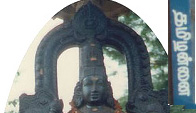
Passenger: அடையாறுக்கு! எவ்வளவு?
Auto man: உட்காருங்கள்!
Passenger: எவ்வளவு?
Auto man: கொஞ்சம்தான் சார்! ரொம்ப இல்லை! உட்காருங்கள்!
Passenger: அதுதான் எவ்வளவு? சொல்!
Auto man: அறுபது ரூபாய் கொடுங்கள்!
Passenger: அடையாறுக்கு அறுபது ரூபாயா? அதிகமாக கேட்காதேப்பா!
Auto man: சார்! கொஞ்சம்தான் சார்! ரொம்ப இல்லை!
Passenger: அதெல்லாம் இல்லை! ? அடயாறுக்கு இருபத்தைந்து ரூபாய்தான். உனக்காக முப்பது ரூபாய்! வா! வா!
Auto man: இது பாதி விலையா? சார், அநியாயமாக குறைக்காதீர்கள். சரி! ஐம்பத்து ஐந்து ரூபாய் கொடுங்கள்.
இதுதான் கடைசி. வண்டியில் உட்காருங்கள்.
Passenger: ஐம்பத்து ஐந்து ரூபாயெல்லாம் இல்லை! முப்பது ரூபாய்தான். வா! வா!
Auto man: காலங்காத்தால பேஜார் பா! முப்பது ரூபாய்க்கு பஸ்ஸில் போ! ஆட்டோவெல்லாம் வராது!
Passenger: உம்ம்! நீ போ! ஐம்பத்து ஐந்து ரூபாய் நல்ல ஏமாற்று வேலையாக இருக்கிறது!
Auto man: நீ போ! சரியான சாவு கிராக்கி! ? இப்படியே நடந்து போ! அடையாறு வரும்!
- Grammar Notes:
Use of numbers: Using ஆம் and ஆவது in forming ordinal numbers
Ordinal numbers in Tamil are made with either the suffixes ஆம் or ஆவது added to the noun form of numbers. An exceptional form is ஒன்று, where ஆம் and ஆவது are optionally added to முதல் (spoken, மொதல்).The suffix ஆம் added to a number creates an adjective which modifies the attributes of some noun. Strictly speaking this suffix represents the absolute place of some item in a sequence, but more generally it serves to mark the attribute of a noun in terms of number.
Examples:
ஒன்றாம் (ஒண்ணாம்) எண் ஆள் 'the person with the number 1'
ஐந்தாம் எண் வீடு 'House number 5'
எட்டாம் மாதம் 'the month 8', as opposed to 'the eighth month in a sequence'
In contrast, the suffix ஆவது represents the relative place of an item in a sequence.
Examples:
முதலாவது கடை or ஒண்ணாவது கடெ 'the first store'
பத்தாவது வீடு 'the tenth house'
நூறாவது மனிதன் 'the hundredth man'
இருநூறாவது நாள் 'two hundredth day'
In rare cases the suffix ஆவது can optionally substitute for the suffix ஆம், for example:
எட்டாவது எண் வீடு 'the house number 8'.
Dialogue:
Participate in a dialogue with a partner involving bargaining. Choose a partner and act out a dialogue that one would normally hear either in stores between a vendor and a customer or between an auto driver and a traveller. Use the following words and expressions:
கொஞ்சம் குறையுங்க
ரொம்ப அதிகமா சொல்லாதீங்க!
எவ்வளவு, எத்தனெ ரூபா?
ஒரு டஜன், ஒரு மைலுக்கு, பத்து ரூபாய்க்கு
யானெ வெலெ குதிரெ வெலெ கேக்காதீங்க
வெலெவாசியெல்லாம் ரொம்ப அதிகம்
அவ்வளவுதான் கொறைக்க முடியும்
ரொம்ப கொறைக்க முடியாது
Dialogue: unit_04/section_A/lesson01.html
- Cultural Notes:
Kinship terms in Tamil
Kinship in Tamil entails a strong affinity toward the idea of combined family, where all the family members live together in a single house. The head of the family is usually the grandfather (தாத்தா), whose sons (மகன்கள்) and grandsons (பேரன்கள்) would be living in the same house with their wives and children. When the daughters get married, they move to their husband's house. Therefore all the male members in a family would be living the same house, unless there is need to move out for the reasons of employment, education, etc. Following is the family tree based on kinship terms.
| தாத்தா (grand father) | பாட்டி (grandmother) |
| அப்பா (father) | அம்மா (mother) |
| அண்ணன் (older brother) | அக்கா (older sister) |
| தம்பி (younger brother) | தங்கை (younger sister) |
| பெரியப்பா (father's older brother) | பெரியம்மா (father's older brother's wife) |
| சித்தப்பா (father's younger brother) | சின்னம்மா or சித்தி (father's younger brother's wife) |
| மாமா (mother's brother) | மாமி (mother's brother's wife) |
| அத்தை (father's sister) | மாமா (father's sister's wife) |
| மாமனார் (father-in-law) | மாமியார் (mother-in-law) |
| மாமா (vocative term for father-in-law) | மாமி or அத்தை vocative term for mother-in-law) |
| மருமகன் (son-in-law) | மருமகள் (daughter-in-law) |
| கொழுந்தனார் (husband's brother) | கொழுந்தியாள் (husband's brother's wife) |
| நாத்தனார் or நாத்தி (husband's sister) | |
| சகலர் or சகலை (wife's sister's husband) | |
| அத்தான் (vocative term for husband) also cross cousins |